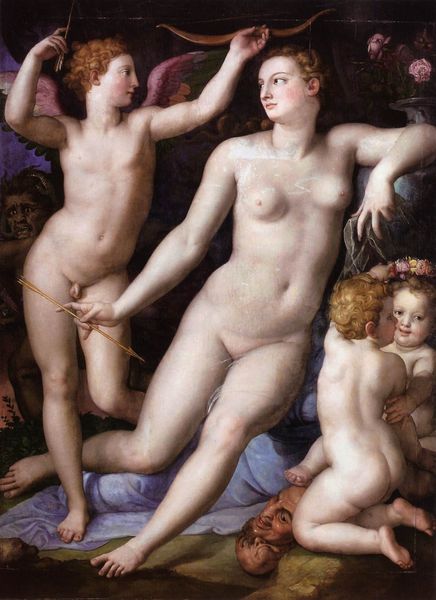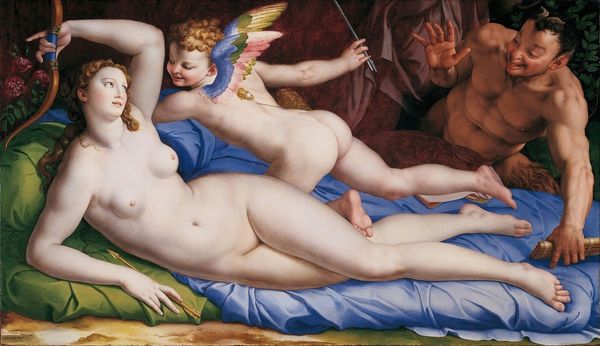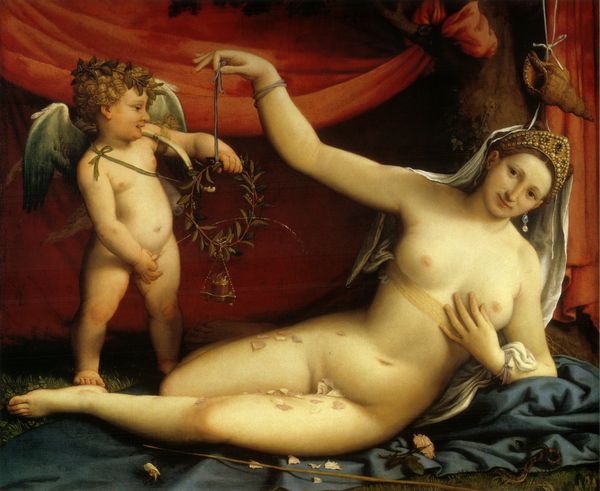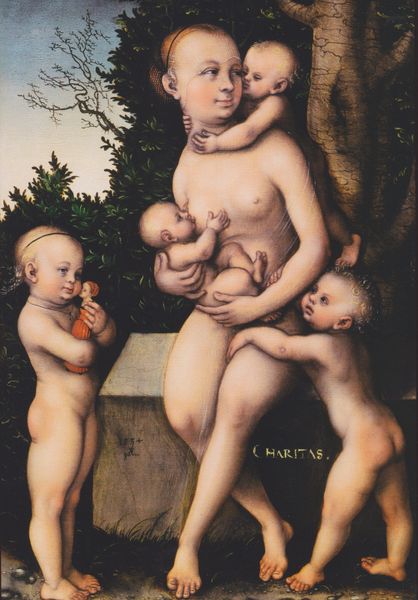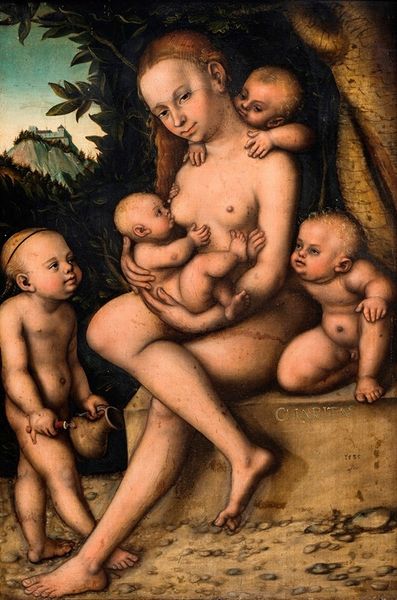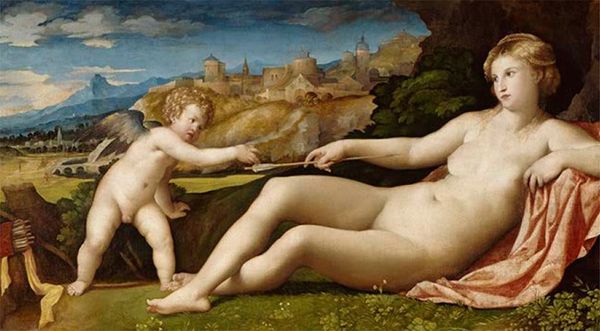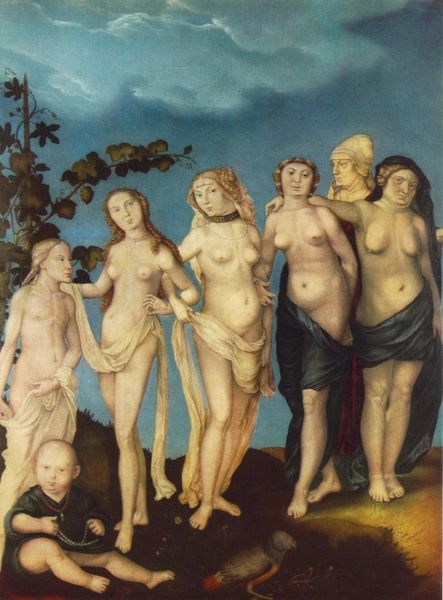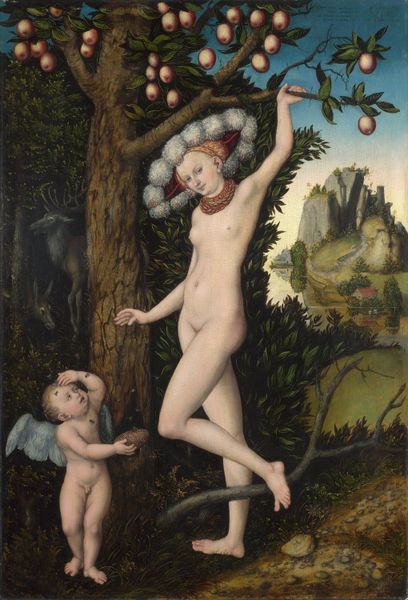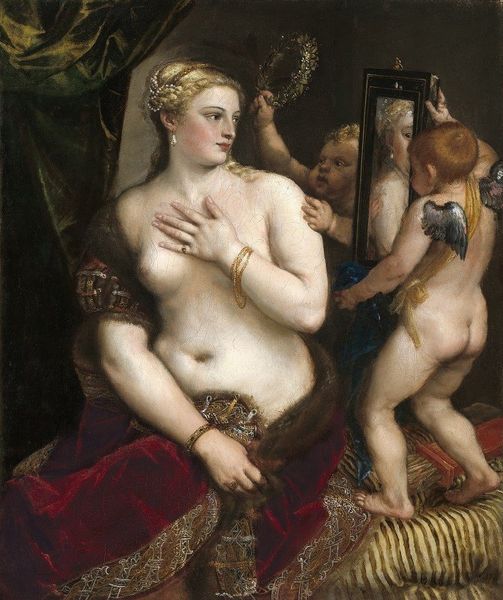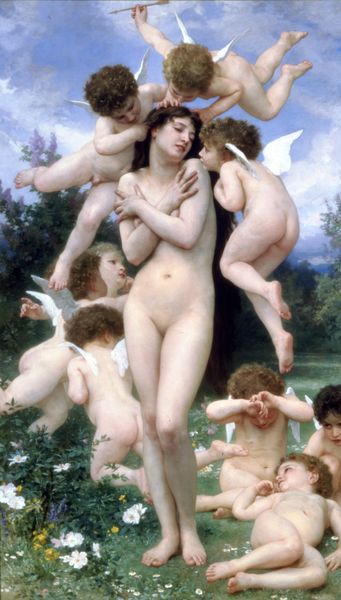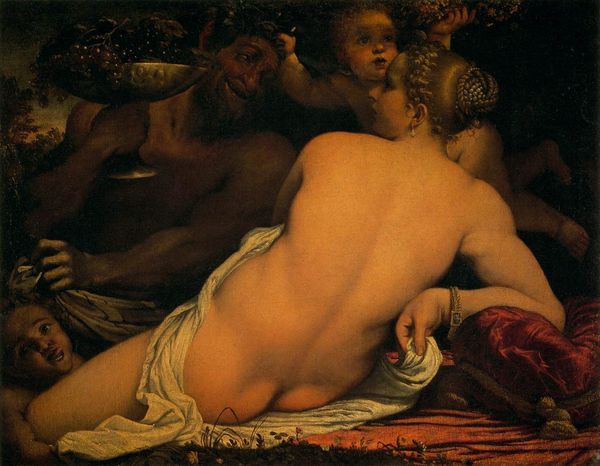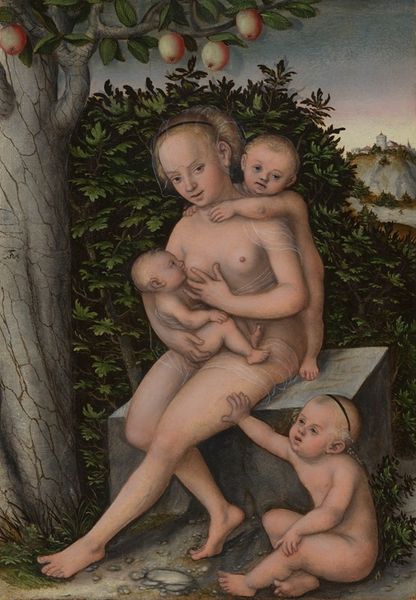
painting, oil-paint
#
allegory
#
fantasy art
#
painting
#
oil-paint
#
mannerism
#
mythology
#
history-painting
#
italian-renaissance
#
nude
Copyright: Public Domain: Artvee
Curator: Agnolo Bronzino's "Venus, Cupid, Folly and Time", created sometime between 1540 and 1545, immediately strikes me as a painting of contradictions, a swirl of classical ideals disrupted. Editor: My first impression is the sensuality, even bordering on the grotesque. There’s a hyper-real quality to the flesh, the poses feel incredibly artificial, almost staged, a very political aesthetic statement about control. Curator: Definitely! Bronzino, a court painter, was operating within very specific social constraints, and I see the complex symbolism as representative of the anxieties of that era. Venus, the Roman goddess of love, is quite deliberately positioned in the very center. Note, she is also holding an apple, a potential reference to the Judgement of Paris. Editor: Precisely, a lot of visual cues pointing towards underlying themes! You have Time and Oblivion in the upper corner, seemingly trying to pull a curtain and reveal the deception unfolding below. It's not a straightforward celebration of love or beauty but rather an exploration of their destructive potentials. Curator: Absolutely, it's an allegory – a representation of abstract concepts. Bronzino has employed figures that point to a cultural continuity of mythological imagery. Even Cupid, kissing Venus, pulls an arrow from his quiver; hardly an innocent act. Folly, represented by the child about to shower them with rose petals, completes the dark sentiment. What does Folly offer us? Blindness. Editor: This visual excess aligns with Mannerist sensibilities, a departure from the Renaissance ideals of harmony and balance. Notice the androgyny present: is Cupid truly male or female? The beauty is not organic; instead, it functions as an obfuscation of raw political and personal intent, a screen for complicated alliances between powerful elite patrons of the arts, like Cosimo de Medici. Curator: A very interesting reading. By invoking familiar imagery, Bronzino can create a symbolic and emotional message within this singular picture that remains as powerful now as it was then. Editor: Agreed. For me, it remains potent because it compels us to dissect the power dynamics that shape even our seemingly innocent desires, and to explore our continued role in reproducing inequities through an inherited system.
Comments
No comments
Be the first to comment and join the conversation on the ultimate creative platform.
